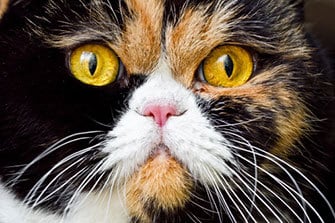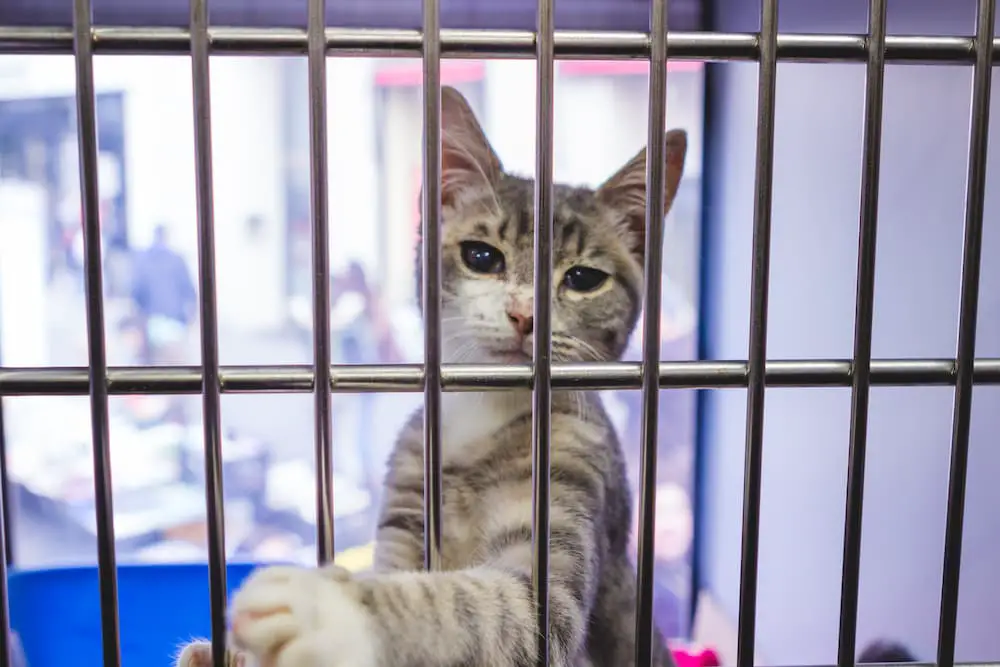 Whiskers (or their scientific term, vibrissae) are the long, thick, flexible hairs on a cats face, framing his mouth and nose. Beautiful as they are, they are also a useful tool. Did you know, whiskers serve a very important function for cats?
Whiskers (or their scientific term, vibrissae) are the long, thick, flexible hairs on a cats face, framing his mouth and nose. Beautiful as they are, they are also a useful tool. Did you know, whiskers serve a very important function for cats?
Unlike your cat’s fur, his whiskers are rooted very deeply into his face, in an area full of blood vessels and sensitive nerves. They serve as receptors, helping your kitty detect and respond to his surroundings. They are so sensitive, in fact, that they can detect even the slightest breeze or vibration in the air. This helps them move around in the dark, as they can sense air currents in the room changing as they get closer to obstacles and will know which way to turn to avoid them.
A cat will also use his whiskers as a gauge to measure width, to tell if he can fit into a tight space. Look at your cat and you’ll notice his whiskers are about the same width as his body! Whiskers are also used to visually measure distance, allowing your kitty to jump gracefully onto a narrow ledge the first time as if he’s done it a hundred times.
Your cat also has whiskers above his eyes (his eyebrows, if you will!) and on the backs of his front legs. These whiskers are especially helpful for cats to know if they’ve got their prey (a mouse or their favorite catnip toy) in the perfect position to attack.
Because whiskers serve such as important function for your feline friend, his whiskers should never, ever be trimmed! Whiskers may shed naturally from time to time (if you’ve ever stepped on one at just the right angle, you know this to be true!) but if you trim or remove them, your cat may become disoriented and confused, unable to navigate properly.
Not only are whiskers an invaluable navigational tool for your baby, you can use them as an indicator of his mood. If you’re not sure if Fluffy is happy, calm, angry or alert, check his whiskers. When they’re relaxed and in their normal position, he’s calm. If you see them flattened against his face, stay back – he’s not happy. And, if they’re pushed forward, he’s alert and excited.
So, what about the cat breeds who don’t have whiskers, like the Sphynx, or those who have curly or broken whiskers, like the Peterbald and Devon Rex? As it turns out, whiskers aren’t the only tool in the cat’s navigational toolbox. These breeds have simply adapted and use their other tools. As someone who is owned by a Sphynx, I can tell you they have no problem whatsoever getting around in the dark or jumping onto high ledges and have never gotten stuck in a small space.







